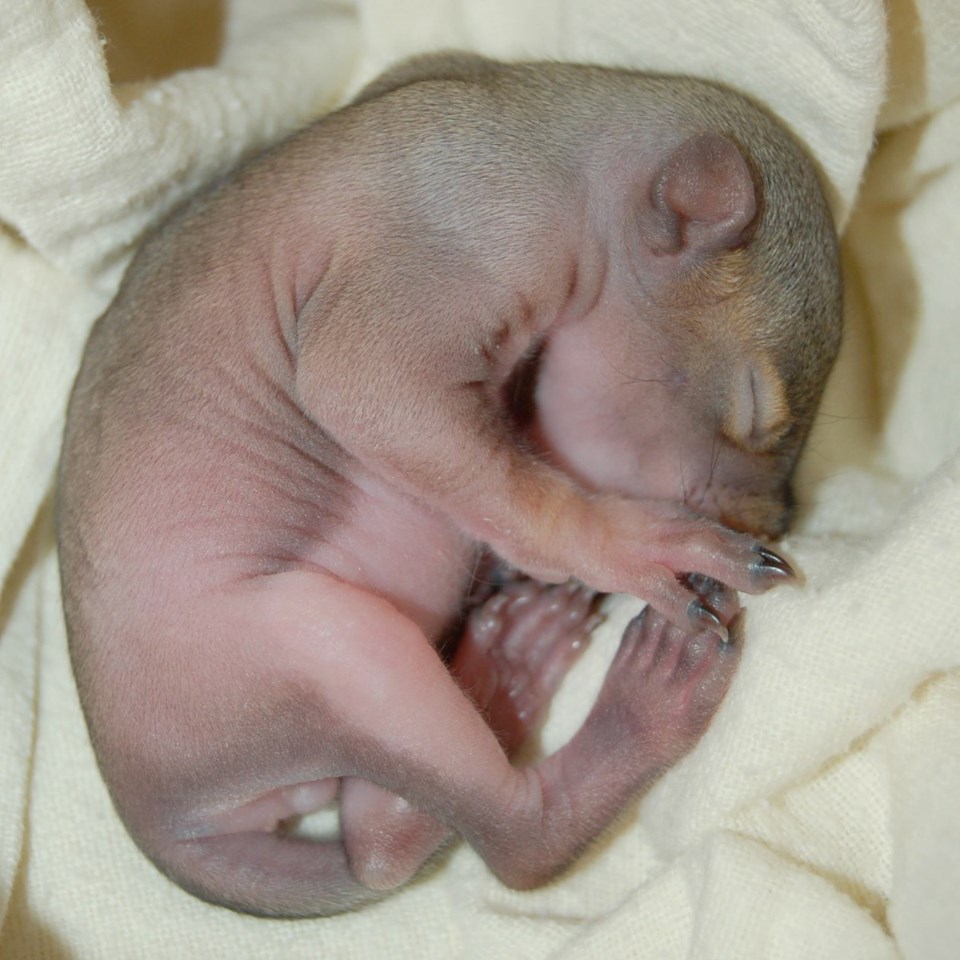It would be difficult to call her a beautiful baby, but a tiny, hairless squirrel is the harbinger of an early spring in Greater Victoria.
The first baby of the year, a three-week-old squirrel found in Esquimalt, is being cared for at B.C. SPCA’s Wild Animal Rehabilitation Centre more than a month earlier than expected.
“The mild winter has meant that many wild animals are nesting and denning much earlier than last year,” said Sara Dubois, wildlife services manager.
The first spring babies to arrive at Wild ARC are usually Anna’s hummingbirds, which overwinter on southern Vancouver Island, followed by rabbits, raccoons, ducklings and then fawns.
Last year, the first baby squirrel arrived at Wild ARC April 10. This one was found March 4.
“Usually April is our busiest month,” said Heather Schmitt, Wild ARC’s assistant manager.
The female baby squirrel, which is now getting a skim of fur, was found out of its nest, and, although the preference is to have young animals stay with their mothers, it had been alone too long, she said.
Fur grows in by about five weeks, helping to make it distinguishable from a young rat, but the squirrel’s full, furry tail will not appear until later, Schmitt said.
“When they are very small, the babies are difficult to tell apart, but one indicator is a squirrel has little black toenails and mice and rats have clear toenails,” she said.
When other baby squirrels arrive at Wild ARC, they will be reared together so they develop the skills they need to survive in the wild, Schmitt said.
Last year, Wild ARC cared for about 2,500 animals. About half of those arrived during the spring baby boom.
As the early arrival of spring babies looms, the centre is continuing to house adults, such as three brown pelicans in the new aquatics facility.
Two of the pelicans were being fed in the Inner Harbour. They were believed to be part of a flock of about 15 adults and juveniles that had made their way north. The rest of the flock took off. By January, the young birds were malnourished and suffering the effects of the cold.
The other bird was found in Tofino in early December.
“They are being prepared for a commercial flight to California to catch up for lost time spent being nursed back to health in B.C. this winter,” said Wild ARC manager Kari Marks.
Wild ARC is usually closed to the public to minimize human contact with the animals, but the facility will host its annual open house April 6 and 7.
Reservations are required. To register, go to spca.bc.ca/tourwildarc2013.
— With a file from The Province



